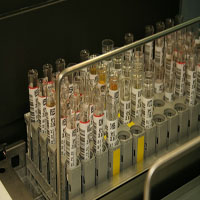A Preliminary estimation of baseline urinary hydroxyproline/creatinine levels in a study population of healthy Nigerians

Accepted: 24 October 2020
All claims expressed in this article are solely those of the authors and do not necessarily represent those of their affiliated organizations, or those of the publisher, the editors and the reviewers. Any product that may be evaluated in this article or claim that may be made by its manufacturer is not guaranteed or endorsed by the publisher.
Authors
Background: Hydroxyproline is one of the biochemical markers that can be measured objectively as an indicator of normal biological processes or pathological processes. It is usually raised in disease conditions that are associated with bone resorption.
Aim: To determine the urinary hydroxyproline/creatinine levels in a study population of healthy Nigerians.
Methods: This study recruited 22 consenting participants who served as control for another study at the University of Nigeria Teaching Hospital (UNTH) Ituku-Ozalla, Enugu. All participants were required to fast for at least 12 hours overnight and their early morning second void urine collected between 7am and 8am. The collected urine samples were stored frozen at -20oC until analysis. Colorimetric method of analysis of urinary hydroxyproline and creatinine were done using Biovisionhydroxyproline kit and Randoxcreatinine kit respectively. Bivariate analysis was conducted on the collated data using statistical package of social science (SPSS) version 19. The results were recorded as urinary hydroxyproline alone (μg/μL) and as urinary hydroxyproline/creatinine ratio.
Results: The mean urinary hydroxyproline level of 0.020±0.013μg/μL and urinary hydroxyproline/ creatinine ratio of 0.016±0.006 were noted for healthy Nigerians.
Conclusions: The urinary hydroxyproline levels in the study population of healthy Nigerians are within normal values reported in other healthy populations.
How to Cite
PAGEPress has chosen to apply the Creative Commons Attribution NonCommercial 4.0 International License (CC BY-NC 4.0) to all manuscripts to be published.

 https://doi.org/10.4081/acbr.2020.98
https://doi.org/10.4081/acbr.2020.98



